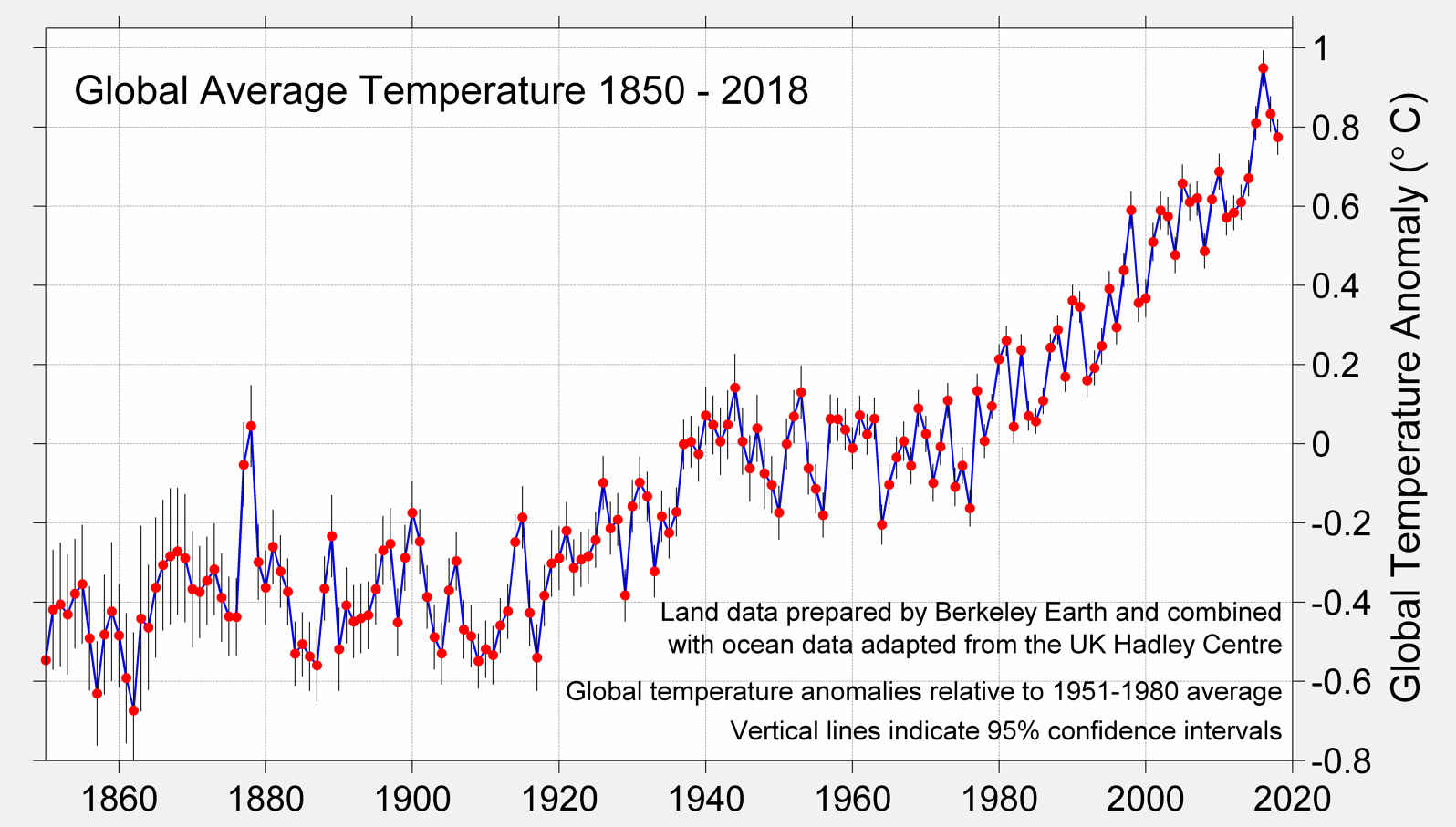I have no idea what he looked at. I have looked at science, logic, and mathematics however, so I'll answer these questions for him and you.
Are you claiming that historical temperature data are not "observed, measured evidence"?
We don't have any accurate 'global temperature' data... Want to know WHY that is? Let's look to Statistical Mathematics for the answer... Before we even begin, it must be noted that our current thermometers (weather stations) are NOT uniformly spaced NOR are they simultaneously read by the same observer. This introduces location and time biases. However, for sake of discussion, I will assume that they DO meet those statistical requirements (they don't, though).
First, we need to note that the surface area of Earth is approx 197 million sq miles.
Second, we need to note just how many thermometers are being used. Remember, our thermometers do NOT meet the requirements of Statistical Mathematics, but for arguments sake, I am saying that they do. I believe NASA claims that they make use of around 7,500 thermometers, so let's use that number. Given 7,500 thermometers, that means that uniformly spaced thermometers would amount to one thermometer per approx. 26,266 sq miles. This covers an area approx. the size of West Virginia.
Third, we need to now declare our variance/range values that we are making use of. With regard to temperatures, they have been recorded to vary by as much as 20deg F per MILE and by as much as 49deg F per TWO MINUTES (showing the extreme importance of precise location and time). Temperatures have been recorded from as low as -128deg F to as high as 134deg F, a possible range of 262deg F.
Now, to summarize, since temperatures can vary by as much as 20deg F per MILE, do you honestly think that one thermometer can accurately measure an area the size of WEST VIRGINIA? This makes for a margin of error of approx. +-100deg F, which is most of the possible temperature range.
In order to get that margin of error down to even +-10deg F, one would need approx. 200 MILLION thermometers.
Satellite 'data' doesn't work, either... Satellites do not measure absolute temperature. They measure light. The problem with trying to convert the light measurement into a temperature via the stefan boltzmann law is that the emissivity constant of Earth is unknown. We don't know how much light is a result of the emission of Earth nor how much is the result of a reflection of something else (sunlight, starlight, etc...) In other words, in order to measure temperature this way, we would need to ALREADY KNOW the temperature of the Earth... a chicken and egg issue...
Simply put, we don't have accurate 'data' (free from location/time biases)...
How about CO2 levels? Are you claiming they aren't "observed, measured, evidence"?
This runs into similar issues that I already described above. CO2 is NOT uniformly distributed across the atmosphere, so it can't be accurately measured as 'global CO2 content' from a few select locations. Also, Mauna Loa data has been known to be cooked. A fairly recent volcano eruption should have produced a huge spike in their data. There was no spike in their data... WTF???? Simply put, just like with temperature readings, we would need many CO2 measurement stations uniformly spread across the globe and simultaneously read by the same observer to even BEGIN such a statistical analysis of what the 'global CO2 content' is. We don't have accurate 'data' (free from location/time biases)...
How about increased sea levels? Are you claiming those aren't "observed, measured, evidence"?
Again, similar issues. An added issue in this case though is the fact that there is no valid "reference point" for this type of measurement. Land isn't in one steady location... it also moves...
You are nothing but a lying TROLL.
Redefinition Fallacy. [lying >> holding differing beliefs]
Insult Fallacy. [calling someone names is not a valid argument]
